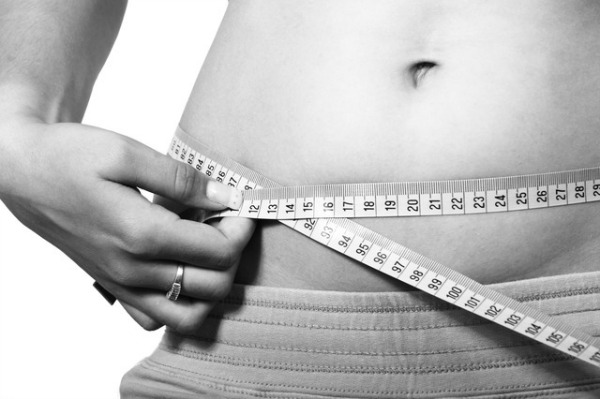The Body Issue Debate
“Top Ten ways to get that bikini body!” “The New Superfood Craze You Need!” “Celebrities and their weight loss diets!” The media industry preys and fixates on celebrities’ appearances and their diets, but how much of that contributes to the body issues of the everyday person?

Body issues have plagued the UK for many years but its increasing, and frankly, worrying presence has brought itself into the spotlight yet again. Where the average size for a catwalk pre-2000s used to be 6-8, the industry standard is now between sizes 0-2. Anything above that, then you’re shunned from every modelling agency and recommended to take some ‘thinspiration’ from your fellow colleagues. This then impinges on the body issues of the rest of the public and how they view themselves.
Critics have constantly pointed the blame at one culprit: the mass media. Accessed 24/7 on phones, tablets and any device with a Wifi connection, it’s a difficult demon to escape. Thus, it’s unsurprising to see recent studies showing a rise in depression, self-harming and suicide due to social networking. As the media’s influence on the public grows stronger by the day, it’s only a matter of time before it becomes a national problem.
Another unsuspecting offender with a vast influence is the advertising industry, worth billions in the UK each year. They sexualise and objectify women in a way that they’re only seen as items, measured ‘to-fit’ in a predetermined quota set by the media industry. Adverts are cleverly crafted so that audiences don’t realise they are being manipulated into purchasing said-item to become the perfect airbrushed model featured. None of us are immune to this; I myself have been sucked into purchasing many products promising the world and more: a certain disappointing Benefit BB cream made its way into my make-up bag through media hype.
Men aren’t exempt to the brain-washing of adverts either. Statistics from King’s College London and UCL Institute of Child Health show a 27% rise in men being diagnosed with eating disorders since 2000. As well as an increase in the number of men taking steroids and illegal substances, all to attain the unrealistic image of the cover stars of Men’s Health magazine. So, is it all that surprising that the level of smoking, alcohol abuse and bullying are at an all-time high because of this issue?
This issue also branches into various topics of disabilities and medical conditions, including skin colour and body shape that the narrow-minded media and advertising industries ignore. Everything you read and see has been formulated and manipulated to create this ‘perfect’ idol that you’re supposed to admire. Whether you chose to admire it or not is a personal choice, but it’s a strong force to reckon with.
Fashion and beauty blogger Josie from Josie’s Journal highlights the issue of medical conditions not being shown enough in the media:
“I guess one thing I’d like to see more in the media is medical stuff. Like people say ‘Oh there’s not enough plus size ladies in mags’ but there’s still more of them than people who have things like my Cystic Fibrosis feeding tube featured!”
But is the issue of ‘weightism’ finally being recognised? Brands like fashion retailer ASOS and Glamour and LOOK magazines have taken steps to ensure plus-size models and the promotion of healthy eating are featured in their websites and magazines. ASOS have also implemented their Model Welfare policy and guidelines to ensure that any digital manipulation included is to promote the clothing and not to alter the model, so that they and the customers are protected. Various high street chains feature plus-size clothing ranges, alongside petite and tall sections, but I would argue that this is just stereotyping weight even more through categorising.
Worrying statistics from The Body Gossip Campaign show that one in ten young people will develop an eating disorder before they reach 25. Even more surprising are that 30% of boys and 70% of girls aged between 11 to 19 say their body is their number priority. A concerning trend for young people, whose priorities should be their education and future.
It’s a given fact that models don’t reflect the whole of society, but couple this with the unrealistic body goals from digital manipulation, and then you’ve got a problem. But it’s changing the perspective of people into believing that weight and other body issues don’t define the person, which is the hardest task.
Labelling people as ‘fat’ ‘ginger’ or ‘Asian’ adds to the pressure of becoming ‘perfect’. But if everyone looked, ate, spoke and did the same things, then society would be a dull place with no individuality or personality to differentiate. In the end, it results to one thing: idolising someone and rigorously sticking to a fad-diet isn’t realistic and healthy for your body.
The government launched their Body Confidence Campaign in 2010, with their first successful International Body Image conference in September 2013, highlighting the key areas to tackle. Speaking at the conference, Minister for Women and Equalities, Jo Swinson perfectly summarised the problem: “In the UK and around the world, men and women are subject to a daily bombardment of images of beauty “ideals” and messages about what they should look like. The sheer volume of those images, the impossibility of escaping them and the constant cultural pressure for bodily perfection can damage self-esteem.”
The campaign is working with the media, advertising, retail and fashion industries to bring about a greater change in the way body issues are handled. The government are also working in conjunction with MediaSmart to help children understand the differences in adverts and All Walks Beyond The Catwalk to promote emotionally considerate design and achievable body ideals.
It’s hard to measure how effective these campaigns are on tackling body and weight issues, but they are a sure step in the right direction. Now, pass me that brownie…
Rhiannon Pulling
@RhiannonBlog
www.everythingbutthekitchen.co.uk





















